
Keywords: segregation distortion
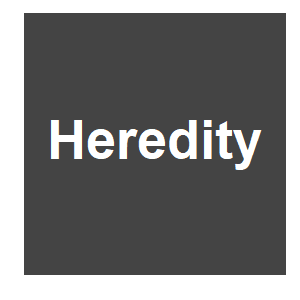
|
Mendel’s laws of heredity on his 200th birthday: What have we learned by considering exceptions?J. B. Wolf, A. C. Ferguson-Smith and A. Lorenz, Heredity, 129:1-3. 2022.
Violations of Mendel’s laws can generically be referred to as ‘non-Mendelian inheritance’. However, from that broad perspective, nearly all inheritance systems would show non-Mendelian inheritance (at least to some degree). To hold exactly, Mendel’s laws impose strict ... Keywords: construction, Environmental Sciences & Ecology, epistatic interactions, Evolutionary Biology, explanation, gene drive evolution, gene drive mechanisms, gene drive natural, genetic incompatibilities, Genetics &, Heredity, hybrid male-sterility, isolation, meiotic drive, plants, quantitative trait loci, reproductive, segregation distortion, sex-ratio |

|
Evolutionary robustness of killer meiotic drivesP. G. Madgwick and J. B. Wolf, Evolution Letters, 2021.
A meiotic driver is a selfish genetic element that interferes with the process of meiosis to promote its own transmission. The most common mechanism of interference is gamete killing, where the meiotic driver kills gametes that do not contain it. A killer meiotic driver is ... Keywords: construction, Environmental Sciences & Ecology, epistatic interactions, Evolutionary Biology, explanation, gene drive evolution, gene drive mechanisms, gene drive natural, genetic incompatibilities, Genetics &, Heredity, hybrid male-sterility, isolation, meiotic drive, plants, quantitative trait loci, reproductive, segregation distortion, sex-ratio |
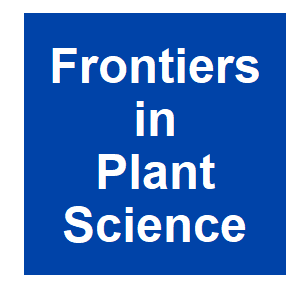
|
Analysis of the Segregation Distortion of FcRAN1 Genotypes Based on Whole-Genome Resequencing of Fig (Ficus carica L.) Breeding ParentsH. Ikegami, K. Shirasawa, H. Yakushiji, S. Yabe, M. Sato, T. Hayashi, K. Tashiro and H. Nogata, Frontiers in Plant Science, 12:8. 2021.
The common fig (Ficus carica L.) has a gynodioecious breeding system, and its sex phenotype is an important trait for breeding because only female plant fruits are edible. During breeding to select for female plants, we analyzed the FcRAN1 genotype, which is strongly associated ... Keywords: construction, Environmental Sciences & Ecology, epistatic interactions, Evolutionary Biology, explanation, gene drive evolution, gene drive mechanisms, gene drive natural, genetic incompatibilities, Genetics &, Heredity, hybrid male-sterility, isolation, meiotic drive, plants, quantitative trait loci, reproductive, segregation distortion, sex-ratio |
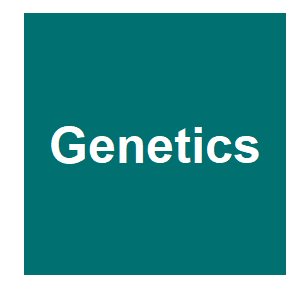
|
X-linked meiotic drive can boost population size and persistenceC. Mackintosh, A. Pomiankowski and M. F. Scott, Genetics, 217:11. 2020.
Here, we find general conditions for the spread and fixation of X-linked alleles. Our conditions show that the spread of X-linked alleles depends on sex-specific selection and transmission rather than the time spent in each sex. Applying this logic to meiotic drive, we show that ... Keywords: construction, Environmental Sciences & Ecology, epistatic interactions, Evolutionary Biology, explanation, gene drive evolution, gene drive mechanisms, gene drive natural, genetic incompatibilities, Genetics &, Heredity, hybrid male-sterility, isolation, meiotic drive, plants, quantitative trait loci, reproductive, segregation distortion, sex-ratio |

|
Selfish genetic elements and male fertilityR. L. Verspoor, T. A. R. Price and N. Wedell, Philosophical Transactions of the Royal Society B-Biological Sciences, 375:7. 2020.
Selfish genetic elements (SGEs) are diverse and near ubiquitous in Eukaryotes and can be potent drivers of evolution. Here, we discuss SGEs that specifically act on sperm to gain a transmission advantage to the next generation. The diverse SGEs that affect sperm often impose ... Keywords: construction, Environmental Sciences & Ecology, epistatic interactions, Evolutionary Biology, explanation, gene drive evolution, gene drive mechanisms, gene drive natural, genetic incompatibilities, Genetics &, Heredity, hybrid male-sterility, isolation, meiotic drive, plants, quantitative trait loci, reproductive, segregation distortion, sex-ratio |
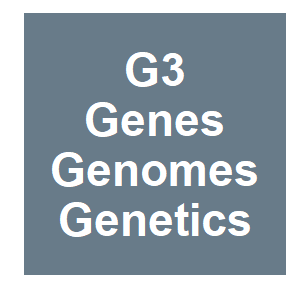
|
A Protamine Knockdown Mimics the Function of Sd in Drosophila melanogasterL. F. Gingell and J. R. McLean, G3-Genes Genomes Genetics, 10:2111-2115. 2020.
Segregation Distorter (SD) is an autosomal meiotic drive system found worldwide in natural populations of Drosophila melanogaster. This gene complex induces the preferential and nearly exclusive transmission of the SD chromosome in SD/SD+ males. This selfish propagation occurs ... Keywords: construction, Environmental Sciences & Ecology, epistatic interactions, Evolutionary Biology, explanation, gene drive evolution, gene drive mechanisms, gene drive natural, genetic incompatibilities, Genetics &, Heredity, hybrid male-sterility, isolation, meiotic drive, plants, quantitative trait loci, reproductive, segregation distortion, sex-ratio |

|
Selfish genes and sexual selection: the impact of genomic parasites on host reproductionN. Wedell, Journal of Zoology, 311:1-12. 2020.Selfish genetic elements (SGEs) such as replicating mobile elements, segregation distorters and maternally inherited endosymbionts, bias their transmission success relative to the rest of the genome to increase in representation in subsequent generations. As such, they generate ... Keywords: construction, Environmental Sciences & Ecology, epistatic interactions, Evolutionary Biology, explanation, gene drive evolution, gene drive mechanisms, gene drive natural, genetic incompatibilities, Genetics &, Heredity, hybrid male-sterility, isolation, meiotic drive, plants, quantitative trait loci, reproductive, segregation distortion, sex-ratio |

|
Autosomal suppression and fitness costs of an old driving X chromosome in Drosophila testaceaG. Keais, S. Lu and S. Perlman, Journal of Evolutionary Biology, 2020.
Driving X chromosomes (XDs) are meiotic drivers that bias their own transmission through males by killing Y-bearing gametes. These chromosomes can in theory spread rapidly in populations and cause extinction, but many are found as balanced polymorphisms or as ?cryptic? XDs shut ... Keywords: construction, Environmental Sciences & Ecology, epistatic interactions, Evolutionary Biology, explanation, gene drive evolution, gene drive mechanisms, gene drive natural, genetic incompatibilities, Genetics &, Heredity, hybrid male-sterility, isolation, meiotic drive, plants, quantitative trait loci, reproductive, segregation distortion, sex-ratio |

|
Standard deviations: The biological bases of transmission ratio distortionL. Fishman and M. McIntosh, Annual Review of Genetics, 53:347-372. 2019.
The rule of Mendelian inheritance is remarkably robust, but deviations from the equal transmission of alternative alleles at a locus [a.k.a. transmission ratio distortion (TRD)] are also commonly observed in genetic mapping populations. Such TRD reveals locus-specific selection ... Keywords: construction, Environmental Sciences & Ecology, epistatic interactions, Evolutionary Biology, explanation, gene drive evolution, gene drive mechanisms, gene drive natural, genetic incompatibilities, Genetics &, Heredity, hybrid male-sterility, isolation, meiotic drive, plants, quantitative trait loci, reproductive, segregation distortion, sex-ratio |

|
Transmission ratio distortion is frequent in Arabidopsis thaliana controlled crossesSeymour, DKC, E.; Arioz, B. I.; Koenig, D.; Weigel, D., Heredity, 122:294-304. 2019.
The equal probability of transmission of alleles from either parent during sexual reproduction is a central tenet of genetics and evolutionary biology. Yet, there are many cases where this rule is violated. The preferential transmission of alleles or genotypes is termed ... Keywords: construction, Environmental Sciences & Ecology, epistatic interactions, Evolutionary Biology, explanation, gene drive evolution, gene drive mechanisms, gene drive natural, genetic incompatibilities, Genetics &, Heredity, hybrid male-sterility, isolation, meiotic drive, plants, quantitative trait loci, reproductive, segregation distortion, sex-ratio |
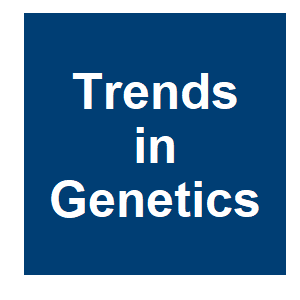
|
Genetic villains: Killer meiotic driversBravo Núñez, MAN, Nicole L.; Zanders, Sarah E., Trends in Genetics, 34:424-433. 2018.
Unbiased allele transmission into progeny is a fundamental genetic concept canonized as Mendel’s Law of Segregation. Not all alleles, however, abide by the law. Killer meiotic drivers are ultra-selfish DNA sequences that are transmitted into more than half (sometimes all) of ... Keywords: construction, Environmental Sciences & Ecology, epistatic interactions, Evolutionary Biology, explanation, gene drive evolution, gene drive mechanisms, gene drive natural, genetic incompatibilities, Genetics &, Heredity, hybrid male-sterility, isolation, meiotic drive, plants, quantitative trait loci, reproductive, segregation distortion, sex-ratio |
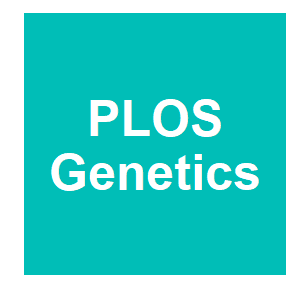
|
Selfish genetic elementsAgren, JAC, A. G., PLOS Genetics, 14:20. 2018.
Selfish genetic elements (historically also referred to as selfish genes, ultra-selfish genes, selfish DNA, parasitic DNA, genomic outlaws) are genetic segments that can enhance their own transmission at the expense of other genes in the genome, even if this has no or a negative ... Keywords: construction, Environmental Sciences & Ecology, epistatic interactions, Evolutionary Biology, explanation, gene drive evolution, gene drive mechanisms, gene drive natural, genetic incompatibilities, Genetics &, Heredity, hybrid male-sterility, isolation, meiotic drive, plants, quantitative trait loci, reproductive, segregation distortion, sex-ratio |

|
Strong hybrid male incompatibilities impede the spread of a selfish chromosome between populations of a flyVerspoor Rudi, LSJ, M. L.; Mannion Natasha, L. M.; Hurst Gregory, D. D.; Price Tom, A. R., Evolution Letters, 2:169-179. 2018.
Meiotically driving sex chromosomes manipulate gametogenesis to increase their transmission at a cost to the rest of the genome. The intragenomic conflicts they produce have major impacts on the ecology and evolution of their host species. However, their ecological dynamics ... Keywords: construction, Environmental Sciences & Ecology, epistatic interactions, Evolutionary Biology, explanation, gene drive evolution, gene drive mechanisms, gene drive natural, genetic incompatibilities, Genetics &, Heredity, hybrid male-sterility, isolation, meiotic drive, plants, quantitative trait loci, reproductive, segregation distortion, sex-ratio |

|
Genetic conflicts: the usual suspects and beyondMcLaughlin, RNM, H. S., Journal of Experimental Biology, 220:6-17. 2017.
Selfishness is pervasive and manifests at all scales of biology, from societies, to individuals, to genetic elements within a genome. The relentless struggle to seek evolutionary advantages drives perpetual cycles of adaptation and counter-adaptation, commonly referred to as Red ... Keywords: construction, Environmental Sciences & Ecology, epistatic interactions, Evolutionary Biology, explanation, gene drive evolution, gene drive mechanisms, gene drive natural, genetic incompatibilities, Genetics &, Heredity, hybrid male-sterility, isolation, meiotic drive, plants, quantitative trait loci, reproductive, segregation distortion, sex-ratio |

|
Segregation distortion in hybrids between the Bogota and USA subspecies of Drosophila pseudoobscuraOrr, HAI, S., Genetics, 169:671-682. 2005.
We show that, contrary to claims in the literature, "sterile" males resulting from the cross of the Bogota and USA subspecies of Drosophila pseudoobscura are weakly fertile. Surprisingly, these hybrid males produce almost all daughters when crossed to females of any genotype ... Keywords: construction, Environmental Sciences & Ecology, epistatic interactions, Evolutionary Biology, explanation, gene drive evolution, gene drive mechanisms, gene drive natural, genetic incompatibilities, Genetics &, Heredity, hybrid male-sterility, isolation, meiotic drive, plants, quantitative trait loci, reproductive, segregation distortion, sex-ratio |
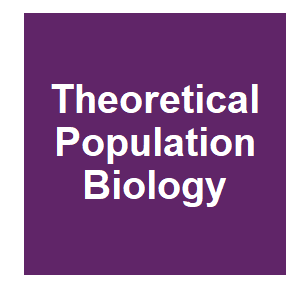
|
Competition at the Mouse t Complex: Rare Alleles Are Inherently Favoredvan Boven, MW, Franz J., Theoretical Population Biology, 60:343-358. 2001.
We investigate the competition between alleles at a segregation distorter locus. The focus is on the invasion prospects of rare mutant distorter alleles in a population in which a wildtype and a resident distorter allele are present. The parameters are chosen to reflect the ... Keywords: construction, Environmental Sciences & Ecology, epistatic interactions, Evolutionary Biology, explanation, gene drive evolution, gene drive mechanisms, gene drive natural, genetic incompatibilities, Genetics &, Heredity, hybrid male-sterility, isolation, meiotic drive, plants, quantitative trait loci, reproductive, segregation distortion, sex-ratio |
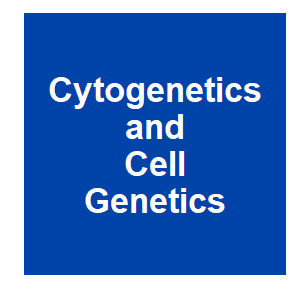
|
Meiotic drive favors Robertsonian metacentric chromosomes in the common shrew (Sorex araneus, Insectivora, Mammalia)Wyttenbach, AB, P.; Hausser, J., Cytogenetics and Cell Genetics, 83:199-206. 1998.
Meiotic drive has attracted much interest because it concerns the robustness of Mendelian segregation and its genetic and evolutionary stability. We studied chromosomal meiotic drive in the common shrew (Sorex araneus, Insectivora, Mammalia), which exhibits one of the most ... Keywords: construction, Environmental Sciences & Ecology, epistatic interactions, Evolutionary Biology, explanation, gene drive evolution, gene drive mechanisms, gene drive natural, genetic incompatibilities, Genetics &, Heredity, hybrid male-sterility, isolation, meiotic drive, plants, quantitative trait loci, reproductive, segregation distortion, sex-ratio |

Contact
David O’Brochta
Foundation for the
National Institutes of Health
geneconvenevi@fnih.org
RSS

